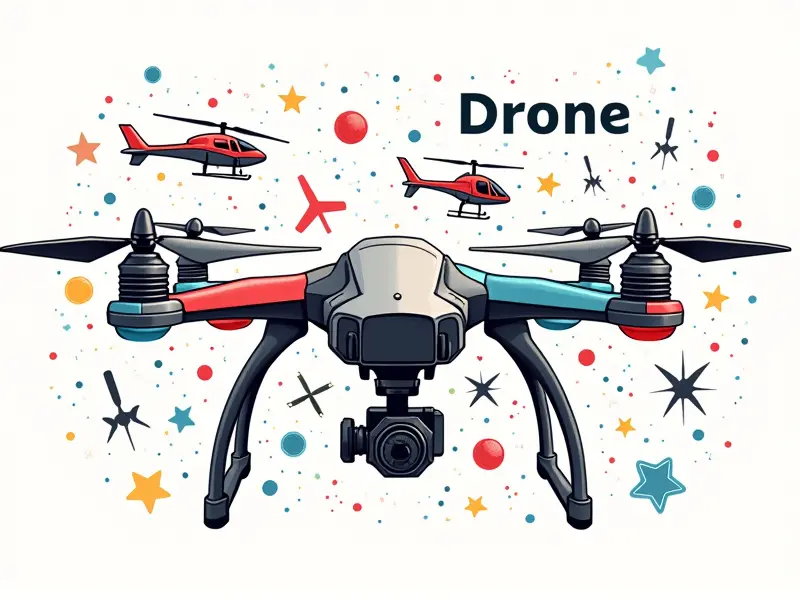Drone crash recovery

Drone Crash Recovery: A Comprehensive Guide
Whether you're an amateur hobbyist or a seasoned professional, the fear of losing your drone in a crash is always looming. However, with the right knowledge and tools, it's possible to recover from a drone crash and get back into the air quickly. This article will guide you through the process of fixing your crashed RC quadcopter, reviving your damaged FPV racing drone, salvaging parts after an accident, and more.
How to Recover from a Drone Crash
The first step in recovering from a drone crash is assessing the damage. Take a moment to calm down and carefully examine each component of your drone for any visible signs of damage or malfunction. This includes checking the frame, motors, propellers, camera, and electronic components.
Fixing Your Crashed RC Quadcopter
An RC quadcopter crash can be devastating, but with proper care and attention, you might be able to salvage your drone. Start by inspecting each motor for any signs of damage or overheating. Check the propellers for cracks or bends; if they're damaged, replace them immediately.
Reviving Your Damaged FPV Racing Drone
FPV racing drones are built for speed and agility but can be prone to crashes due to their high-speed nature. After a crash, focus on checking the frame for any cracks or deformations. The camera and video transmitter should also be inspected for damage.
Salvaging Your RC Helicopter After a Crash
RC helicopters are more complex than quadcopters and can suffer significant damage in a crash. Begin by examining the main rotor blades for any signs of damage or wear. Check the tail rotor assembly, servos, and electronic speed controller (ESC) for any issues.
Step-by-Step Guide to Drone Crash Recovery
- Assess the Damage: Take a moment to calm down and carefully examine each component of your drone for damage.
- Document the Incident: Take photos or videos of the crash site and any visible damage. This can be helpful if you need to file an insurance claim.
- Disassemble Your Drone: Carefully take apart your drone, starting with the easiest components first (e.g., propellers).
- Inspect Each Component: Check each part for damage and replace any broken or worn-out parts immediately.
- Clean and Lubricate: Clean all components thoroughly and apply lubricant where necessary to prevent further wear.
Tips for Rescuing Your Crashed Drone
Here are some tips to help you rescue your crashed drone:
- Stay Calm: Panicking can lead to hasty decisions and further damage. Take a deep breath and approach the situation methodically.
- Use Proper Tools: Have the right tools on hand, such as screwdrivers, pliers, and replacement parts.
- Consult Manuals: Refer to your drone's manual for specific instructions on disassembly and repair.
Recovering Damaged RC Helicopters Quickly
RC helicopters can be more challenging to recover due to their complexity. Here are some steps to help you get back in the air:
- Check Main Rotor Blades: Inspect for cracks, bends, or other damage.
- Examine Tail Assembly: Check the tail rotor and ensure all connections are secure.
- Test Servos and ESCs: Use a multimeter to check if servos and electronic speed controllers (ESCs) are functioning correctly.
Bounce Back After a Quadcopter Crash
A quadcopter crash can be disheartening, but with the right mindset and approach, you can bounce back quickly. Focus on repairing or replacing damaged parts and learning from your mistakes to prevent future crashes.
Post-Crash Checklist for Drones
- Assess Damage: Check each component for damage.
- Document Incident: Take photos or videos of the crash site and any visible damage.
- Disassemble Drone: Carefully take apart your drone, starting with the easiest components first.
- Inspect Components: Check each part for damage and replace any broken or worn-out parts immediately.
Revive Your Downed FPV Racing Drone
To revive an FPV racing drone, follow these steps:
- Frame Inspection: Look for cracks or deformations in the frame.
- Camera and Transmitter Check: Ensure that the camera and video transmitter are undamaged.
- Propeller Replacement: Replace any damaged propellers immediately to avoid further damage during flight.
Salvaging Parts After a Drone Crash
Even if your drone is beyond repair, there may still be parts that can be salvaged and reused. Here are some tips for salvaging parts:
- Identify Usable Components: Look for any undamaged or slightly damaged components that can be used in another build.
- Store Parts Properly: Store salvaged parts in a dry, clean place to prevent further damage.
- Consider Upgrading: Use salvaged parts as an opportunity to upgrade your drone with better components.
Conclusion
Recovering from a drone crash can be challenging but is often possible with the right knowledge and tools. By following this comprehensive guide, you'll be able to assess damage, repair or replace broken parts, and get back into the air quickly. Remember to stay calm, use proper tools, and document your progress for future reference.

